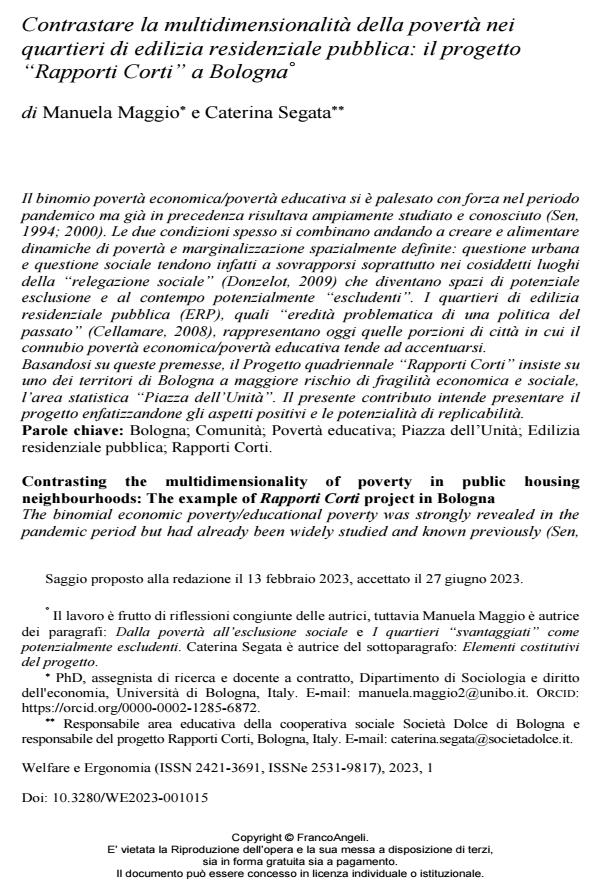Contrasting the multidimensionality of poverty in public housing neighbourhoods: The example of Rapporti Corti project in Bologna
Journal title WELFARE E ERGONOMIA
Author/s Manuela Maggio, Caterina Segata
Publishing Year 2023 Issue 2023/1
Language Italian Pages 14 P. 185-198 File size 309 KB
DOI 10.3280/WE2023-001016
DOI is like a bar code for intellectual property: to have more infomation
click here
Below, you can see the article first page
If you want to buy this article in PDF format, you can do it, following the instructions to buy download credits

FrancoAngeli is member of Publishers International Linking Association, Inc (PILA), a not-for-profit association which run the CrossRef service enabling links to and from online scholarly content.
The binomial economic poverty/educational poverty was strongly revealed in the pandemic period but had already been widely studied and known previously (Sen, 1994; 2000). The two conditions often combine to create and fuel dynamics of spatially defined poverty and marginalization: urban question and social question tend to overlap especially in the so-called places of “social relegation” (Donzelot, 2009) which become spaces of potential exclusion and at the same time potentially “exclusive”. Public residential housing neighbourhoods (ERP), as a “problematic legacy of a policy of the past” (Cellamare, 2008), today represent those portions of the city in which the combination of economic poverty/educational poverty tends to accentuate. Based on these premises, the four-year Rapporti Corti project insists on one of the areas of Bologna at the greatest risk of economic and social fragility, the statistical area “Piazza dell’Unità”. This contribution intends to highlight the project, emphasizing its positive aspects and potential for replicability.
Keywords: Bologna; Community; Educational poverty; Piazza dell’Unità; Public housing, Rapporti Corti.
Manuela Maggio, Caterina Segata, Contrastare la multidimensionalità della povertà nei quartieri di edilizia residenziale pubblica: il progetto "Rapporti Corti" a Bologna in "WELFARE E ERGONOMIA" 1/2023, pp 185-198, DOI: 10.3280/WE2023-001016